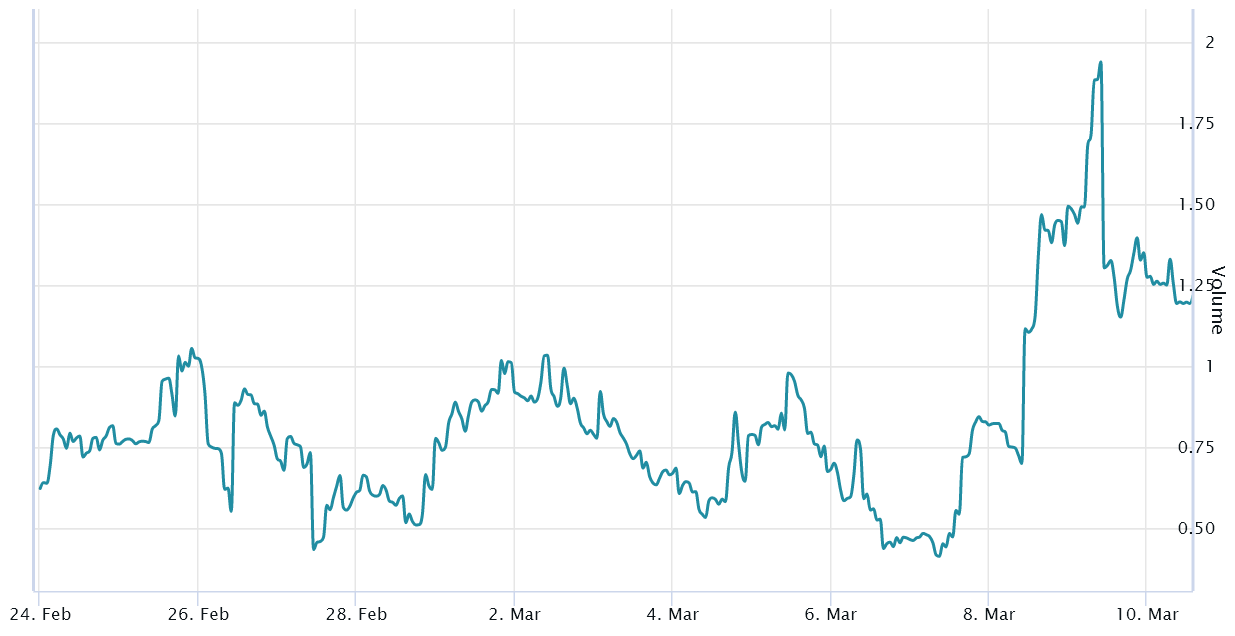Big round numbers always interest investors and the total cryptocurrency market cap of $1 trillion is no exception. It is the level that held for 48 days before crashing on March 9th. After a negative 16-hour price movement of 8.6%, the index fell to $914 billion, its lowest level since January 13.
Concerns about the stability of the US banking industry, specifically the collapse and its aftermath Silvergate Bank (SI) closing On March 8 and Silicon Valley Bank (SVB) closing On March 10 by the California Department of Financial Protection and Innovation, among the reasons for breaking capital support below $1 trillion. Silvergate has been an important online portal network for major cryptocurrency exchanges and brokers.
The California Department of Financial Protection and Innovation did not provide an explanation for the closure of SVB Bank. However, it stated that the financial institution would be the first FDIC-insured institution to fail in 2023.
Silicon Valley Bank has more than $200 billion in assets and has provided financial services to a number of crypto-focused venture firms, including Andreessen Horowitz and Sequoia Capital.
However, don’t forget the US Federal Reserve’s ongoing efforts to curb inflation, which include raising interest rates above 2% in August 2022 and reducing its balance sheet through asset sales. In addition, US labor market data released on March 10 revealed 311,000 jobs were created in February 2023, supporting the notion that the federal anti-stimulus measures require additional firepower.
The unforeseen consequence of the central bank’s dovish stance is a greater possibility of a longer and sharper economic downturn. Investors demanded a higher yield for two-year Treasury bonds versus longer-term bonds, which caused a crash Inverted bond curve to its highest level in 40 years.
What is the significance of the $920 billion market cap?
A notable bounce occurred as the total cryptocurrency capitalization reached $920 billion, which indicates that there are plenty of buyers around this level, which may seem insignificant at first but is significant for Bitcoin (BTC), the leading cryptocurrency. To start, one must understand that Bitcoin accounts for almost half of the total cryptocurrency capital when excluding stablecoins.
As a result, Bitcoin’s market cap of $380 billion serves as the basis for a total of $920 billion. There are three reasons why this level is important from an evaluation point of view.
Bitcoin remains a top 20 global tradable asset, valued at more than $380 billion, ahead of retail giant Walmart (WMT), international payment processor Mastercard (MA), and highly profitable consumer esteem Procter & Gamble (PG). It becomes difficult to attribute failure after such a remarkable achievement.
Although Bitcoin is down 50% in 12 months to $19,650, its performance is similar to that of billion-dollar companies such as Credit Suisse Group (CS) at 63%, First Republic Bank (FRC) at 51%, and Warner Bros. (WBD) 43% and Intel 43%.
Finally, by maintaining its capitalization of $380 billion, it remains the seventh largest global primary money compared to fiat currencies. For example, the Australian dollar (AUD) money supply is $378 billion, while the Canadian dollar (CAD) money supply is $220 billion. The Indian rupee, with a monetary base of $500 billion, is the next potential target.
At the moment, the ratio of put/call options is stable
Traders can gauge overall market sentiment by gauging whether more activity is going through with buying (going long) or selling (selling) options. In general, call options are used for bullish strategies, while call options are used for bearish strategies.
A buy-to-buy ratio of 0.70 indicates that the open interest of the put option lags the number of put options and is therefore bullish. On the other hand, the indicator 1.40 favors buying options, which is a bearish sign.
Related: South Dakota government vetoes bill that excludes cryptocurrency from definition of “cash”“

Since March 8th, the demand for defensive selling has increased, indicating a risk aversion for derivatives traders. Aside from a brief breakout on March 9 when the buy-to-buy ratio jumped above 1.50, there was nothing out of the ordinary as the move coincided with bitcoin’s price dip below $22,000.
The gap in favor of a measure of call options risk was narrowing, suggesting that even professional traders are finding themselves shorting as the cryptocurrency market continues to drop to new lows.
More importantly, the bitcoin options market is showing no signs of straining, which is encouraging given the massive pressure from the banking sector and the prospects of a waning economy.
The views, ideas and opinions expressed herein are those of the authors alone and do not necessarily reflect or represent the views and opinions of Cointelegraph.
This article does not contain investment advice or recommendations. Every investment and trading move involves risk, and readers should do their own research when making a decision.

















